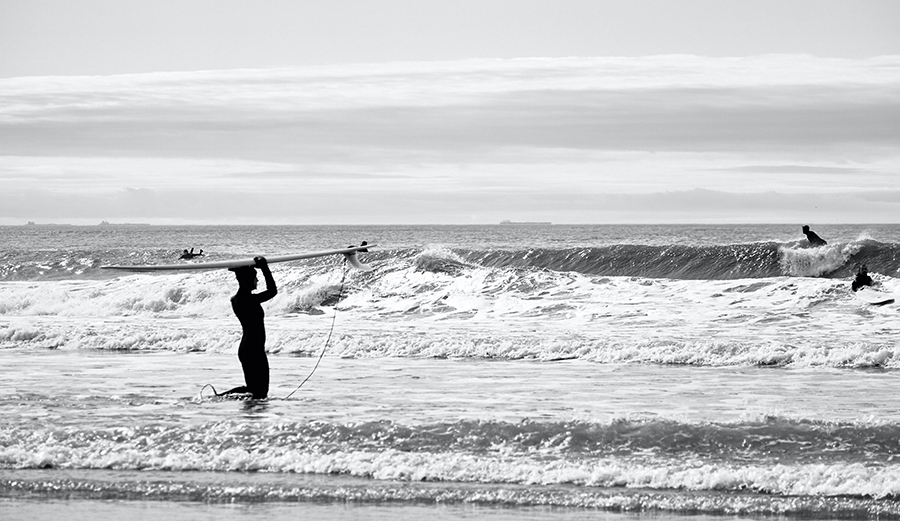Long Island, New York, USA
Country/State Data
Regions
1
Breaks
16
Coastline
204 KM
Cost of living
Capital
Albany
Security
Health
Positives
- South-facing coastline
- Excellent hurricane swell exposure
- Montauk reefs
- City barrier island breaks
Negatives
- Inconsistent
- No NE swells
- Busy line-ups
- Access issues
Where to surf in Long Island, New York, USA
The Surf in New York is different from the lower portion of the Mid-Atlantic coast; Long Island juts due east out into the ocean, giving its south-facing beaches an excellent hurricane swell window and the ability to pick up some SW windswells. This however means that regular wintertime NE swells can’t get into most spots. There are even a few rock-bottomed reef and pointbreaks, at the southern boundary of New England’s geology out at Montauk, on the eastern tip of Long Island. This is where most New York surfers would choose to be on just about any given set of conditions, but it can be a long and gruelling drive for residents of the Big Apple. There are plenty of beachbreak and jetty options much closer to the city — from the mad city scenes of Rockaway Beach to the spacious and audacious wealth out at The Hamptons.
Surf spots in Long Island, New York, USA
Research the 16 surf breaks in Long Island, New York, USA and discover what spots suit the current conditions.
Break lowdown
We’ve collated the wave data giving you a unique insight into the 13 breaks in Long Island, New York, USA.
When to go
Surf and weather statistics to help plan your surf trip to Long Island, New York, USA
- jan
- feb
- mar
- apr
- may
- jun
- jul
- aug
- sep
- oct
- nov
- dec
Library
Helpful surf travel videos and articles featuring Long Island, New York, USA.
Travel Information
General
- Population
- 19,795,791
- Tourist Info
- Tourist Info
Security
Health
Money
- Currency
- USD
Cost of living
Communication
- Dialing in
- +1
- Dialing out
- 011
- Emergencies
- 911
- Language
- English
Electricity
- Plug Type
- ab
Visas
Due to Covid there are special restrictions so it is essential to check the latest news before booking any trip. Normally most Europeans, Aussies, Kiwis and Japanese are part of the Visa waiver program so do not need a visa to enter the USA for up to 90 days, but they do need to apply for ESTA (Electronic System for Travel Authorization) which costs US$14. Other nationalities need to check as the rules are constantly being adjusted.
Accommodation
Plenty of accommodation close to the city (AirBnB). In Montauk look up The Surf Lodge, Surf Club Montauk or camp at Hither Hills behind the surf or Fire Island.
Activities
Long Island has a wild feel in places with numerous state and county parks. Fishing is big both sides of the island. Visit the Walt Whitman Birthplace and Interpretive Center in Huntington or Roosevelt’s Summer White House.
Hazards & hassles
Shark attacks number 10 in 180 years. Stinging lion’s mane jellyfish are huge and regular summer visitors. Beach tags are enforced in summer by local councils and beach access or parking is near impossible in some towns. Long Island marine waters are polluted with PCBs, dioxin, cadmium and regular sewage spills from antiquated septic systems. Surfrider do lots of volunteer beach clean-ups.
Handy Hints
Many good surf shops including BungerSurf who have been on LI since 1961. Surf schools all along the coast from NYC to Montauk, many offering summer camps.
Due to global pandemic, Visas, Getting There, Getting Around or Accommodation information and pricing may have changed. Always check Government Travel Advice before travelling.
Travel Gallery
Surf Culture
History
The Stormrider Passport
Get your Stormrider Passport to explore 5000 surf spots for as little as £1.25 a month.
What’s in it for you?
- 01.
5,000 DETAILED BREAK REPORTS
Access to 5,000 detailed surf spot descriptions with ability to save spots for offline access.
- 02.
10 STORMRIDER ICONS FOR EVERY SPOT
Compare our iconic, easily recognisable symbols, highlighting 10 crucial factors for every surf break.
- 03.
UNIQUE STORMRIDER FILTERS
Personalise your search by matching your skill level, travel plans, and seasonal preferences to discover your perfect waves.
- 04.
WINDY FORECAST FOR EVERY BREAK
Get the latest surf conditions from our forecast partners at Windy, plus webcams and forecasting links.
- 05.
COMPARE REGIONAL SURF SPOT DATA
Compare regional break data and statistics to quickly discover your ideal surf destinations.
- 06.
CREATE YOUR PERSONAL WORLD SURF MAP
Easily build a map of your worldwide surf travel adventures, or create a bucket list of future destinations.

We've got more in the pipeline
Signing up not only gives you access to the World’s best surf information, it allows us to create even more amazing features in the future.










